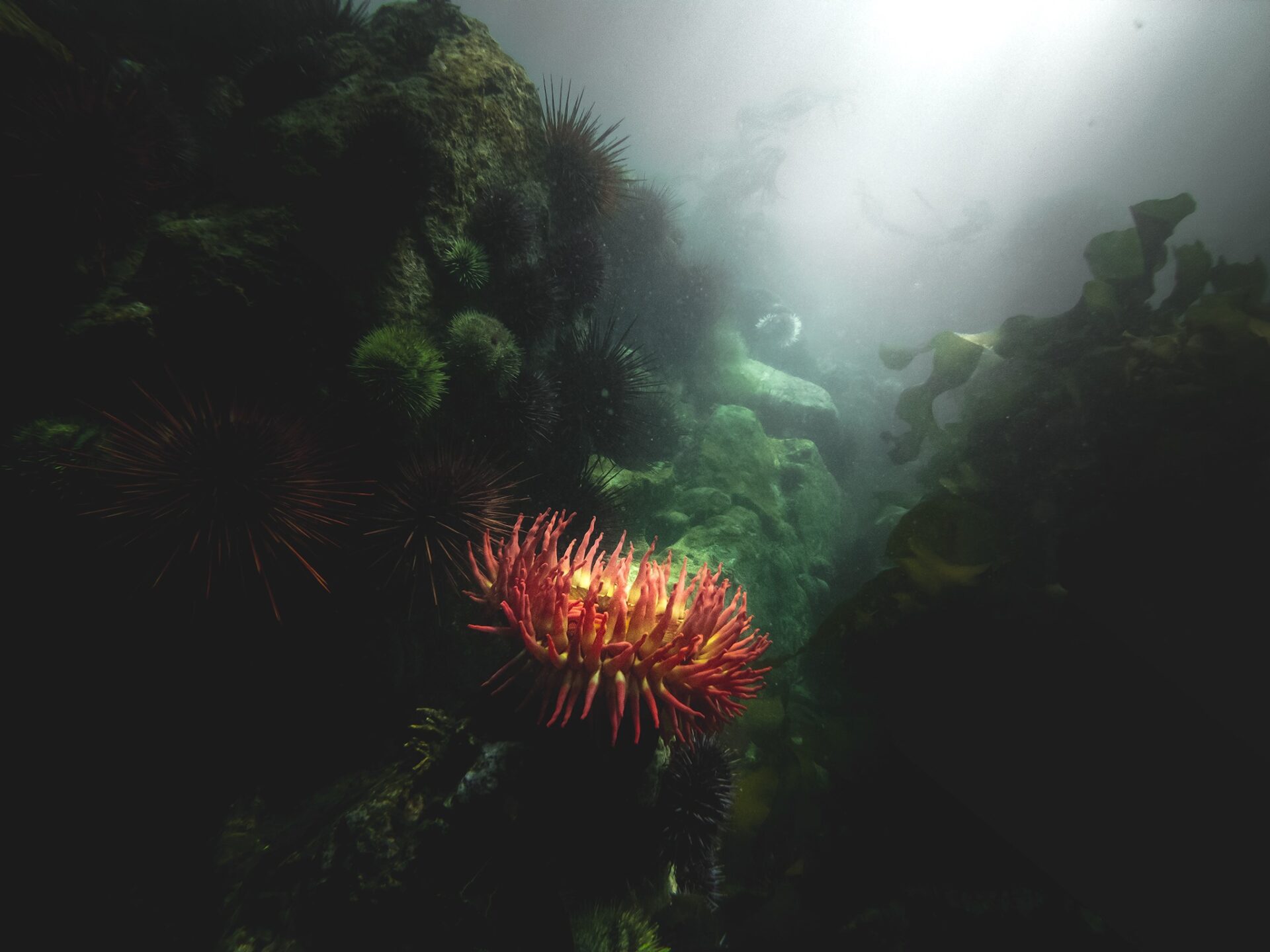Many visitors to British Columbia (and residents alike) are unaware of the kaleidoscopic scenery and diverse wildlife that exists under the surface of the Pacific. You might reasonably think that a swift glance from the deck of a BC ferry will tell you as much as you ought to know of the cold ocean here. But the fact is, the frigid nutrient-rich waters off the BC coast contain an astonishing array of biodiversity, and the views can be so spectacular that they rival those of the province’s terrestrial parks, with a sense of awe just as palpable.
It all starts in just a few inches of water. Here, in the intertidal zone, one can easily observe resilient rock-dwelling species such as limpets, periwinkles, mussels and barnacles (collectively referred to by a biologist friend of mine as “nature’s Easter eggs”). Beyond that is the subtidal zone, where the real action is.

Famed underwater explorer Jacques Cousteau once proclaimed the waters off the coast of BC to be the best cold-water diving in the world. Places like Howe Sound, the Gulf Islands, Haida Gwaii and Barkley Sound literally teem with a psychedelic rainbow of wildlife. Purple Dungeness crabs, red sea urchins, white glass sponges, green sea anemones, orange sea cucumbers and yellow sea stars are just some of the colourful characters that inhabit the plentiful kelp forests, which line the bays and promontories of this vast coastline.
If you are feeling brave and curious, then I recommend pulling on a wetsuit, fins, mask and a snorkel, and finding a spot to jump into the water. SCUBA is an excellent method to explore the depths, but just snorkeling on the surface or freediving (holding your breath) are equally as captivating. Just make sure to get some training before you do. When choosing a place to go, you’ll want to try to locate a kelp forest. Dark green, billowy and slimy: they are hard to miss, and their beautiful, leafy canopy serves as the nursing ground for some of the most interesting creatures in the ocean.
One specimen to look out for is the Puget Sound king crab—one of the largest and rarest crab species in the northern Pacific—which migrates once a year into shallow waters to mate and produce offspring. With a hard, bumpy shell that is speckled with splotches of red, orange and purple, it looks like the crustacean equivalent of Optimus Prime. Despite its formidable appearance, the Puget Sound king crab likes to avoid conflict by transforming into a tightly-shut lump of rocky-looking carapace when approached. Like sea otters, the Puget Sound king crab feeds on invertebrates such as sea urchins, which are troublesome, overpopulated critters that have a voracious appetite for kelp. By controlling sea urchin populations, the kelp forests remain healthy and lush, which in turn helps to conceal the Puget Sound king crab from its predators in the sky. A perfectly balanced system designed by Mother Nature.
If you get lucky in your underwater adventures, you may get an opportunity to meet the larger inhabitants of the Pacific’s rocky coastline including the wolf eel or the giant Pacific octopus.
Wolf eels, a type of wolffish and not a true eel, are slow-moving and vicious-looking creatures that can reach up to 2.5-metres long, but are well-known for their caring and committed approach to love. Like many humans, wolf eels typically have monogamous relationships: mating for life, sharing parental duties and sharing the same cave together—that is, until a larger creature comes knocking. The giant Pacific octopus is the largest and oldest living species of octopus in the world and can grow up to a whopping 50 kilograms with a wing (or tentacle) span equivalent to the height of a two-storey building. These nocturnal predators have a healthy appetite and prefer to feed on crabs, prawns, small fish and molluscs. However, in 2012, a BC photographer shot images of a massive giant Pacific octopus snatching a seagull off the surface, near Ogden Point in Victoria, ultimately dragging the bird down to its den for dinner. Lucky shot! Keep a keen eye if you hope to see one because these intelligent, elusive creatures can camouflage to their surroundings in an instant.
So, you still think you know BC? Why not throw on some dive gear and go stick your head under the liquid curtain to find out what you’ve been missing.

